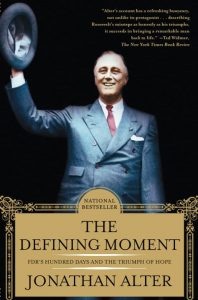The Impact of Soundtracks: Music in Cinematic Storytelling

In the realm of cinematic storytelling, where visuals and narrative intertwine, the power of music takes center stage. The soundtrack of a film is not merely background noise; it is a potent force that shapes emotions, enhances storytelling, and lingers in the hearts of audiences long after the credits roll. “The Impact of Soundtracks” explores the profound influence of music in cinematic narratives, examining how it elevates storytelling to an art form.

Setting the Tone: Establishing Atmosphere
From the first notes that grace the screen, a film’s soundtrack sets the tone, establishing the emotional atmosphere that will envelop the audience. Whether it’s the haunting melody of a thriller, the whimsical tunes of an animated feature, or the swelling orchestration of an epic adventure, the soundtrack serves as a sonic gateway into the world of the film.
Enhancing Emotional Resonance: Amplifying Feelings
Music possesses the remarkable ability to amplify and articulate emotions in ways that words alone often cannot. A well-crafted soundtrack complements the visual narrative, accentuating joy, intensifying suspense, or tugging at heartstrings with its melodic grace. The marriage of music and imagery creates a symphony of emotions that resonates deeply with viewers, forging a visceral connection to the characters and their journeys.
Iconic Themes: Unforgettable Melodies
Certain soundtracks transcend the confines of the film, birthing iconic themes that become synonymous with the cinematic experience. Whether it’s John Williams’ majestic score for “Star Wars,” Hans Zimmer’s pulse-pounding composition for “Inception,” or Ennio Morricone’s haunting melodies in “The Good, the Bad and the Ugly,” these timeless themes become indelibly linked to the cultural fabric, instantly recognizable and eternally resonant.
Narrative Pacing: Rhythmic Storytelling
The rhythm and tempo of a film’s soundtrack contribute to the pacing of the narrative. In moments of action, the music quickens, heightening tension and excitement. Conversely, during contemplative scenes, a gentle melody or a poignant refrain may slow the pace, allowing for introspection and emotional depth. The symbiotic relationship between music and narrative pacing is a testament to the artistry of cinematic storytelling.
Character Identity: Musical Motifs
Just as characters have visual traits and personalities, the use of musical motifs provides them with auditory identities. A recurring theme or leitmotif associated with a character creates a sonic signature that evolves alongside the character’s journey. This musical continuity not only enhances character development but also serves as a narrative thread weaving through the entirety of the film.
Cultural Context: Reflecting Time and Place
Soundtracks serve as sonic time capsules, reflecting the cultural context of the film’s setting. Whether incorporating period-specific music, cultural anthems, or innovative compositions that push artistic boundaries, the soundtrack becomes a vessel for encapsulating the zeitgeist of a particular era, enriching the cinematic experience with historical and cultural resonance.
Collaboration and Innovation: Composers and Directors
The collaboration between directors and composers is a dynamic interplay that significantly influences a film’s sonic landscape. Visionary directors work hand-in-hand with composers to articulate the emotional beats, thematic nuances, and narrative crescendos. This collaborative synergy has given rise to some of the most memorable soundtracks in cinematic history.
Memorable Moments: Soundtracks Beyond the Screen
The impact of soundtracks extends beyond the confines of the cinema. Iconic film scores become cultural touchstones, finding their way into concert halls, playlists, and even daily life. Whether it’s the haunting whistle of Ennio Morricone’s “The Good, the Bad and the Ugly” or the triumphant swell of Hans Zimmer’s “The Dark Knight,” these soundtracks have a life of their own, ingrained in the collective memory of audiences.
Conclusion: The Harmonic Tapestry of Cinematic Excellence
“The Impact of Soundtracks” in cinematic storytelling is a testament to the harmonious interplay of visual and auditory elements. As composers craft symphonies that echo the emotional landscape of a film, audiences are transported into realms of imagination and feeling. The power of music in cinema transcends the screen, creating an indelible imprint on the hearts of viewers and ensuring that the resonance of a well-crafted soundtrack endures as an integral part of the cinematic experience.






